The humble coffee table served as the centerpiece of every ’70s living room, a modest stage for displaying our family’s personality and priorities. Long before minimalist design philosophies encouraged clearing surfaces, these trusty tables—often crafted from dark wood, smoked glass, or wrapped in vinyl—proudly displayed a carefully curated collection of items that reflected both practicality and personal taste. Like archaeological artifacts from a not-so-distant past, these common coffee table residents tell the story of how we lived, entertained, and presented ourselves to visitors in that iconic decade.
1. The TV Guide – Sacred Text of Entertainment Planning

No ’70s coffee table was complete without the week’s TV Guide, typically positioned for easy access during prime-time decision-making. This small-format magazine served as the family’s entertainment bible, consulted daily to navigate the limited programming options across just three major networks and perhaps an independent local channel. Household members would circle their must-watch programs with different colored pens, negotiating viewing schedules without the luxury of recording devices or streaming options. It’s About TV reflects on its legacy and momentum gained in the first 25 years.
The arrival of the new issue each Thursday created a minor household event, with the previous week’s copy reluctantly relinquished to make way for fresh listings. Beyond schedules, the publication offered celebrity interviews, behind-the-scenes features, and those iconic covers that captured cultural moments so effectively that they’ve become collectibles today. As cable television expanded viewing options and digital guides eventually replaced print, this coffee table essential gradually disappeared, taking with it the shared ritual of planning family viewing time together.
2. Oversize “Coffee Table Books” Nobody Actually Read

Publishers in the ’70s mastered the art of creating massive, lavishly illustrated books designed specifically for display rather than reading. These impressive tomes—featuring topics like national parks, European cathedrals, or Hollywood legends—signaled intellectual curiosity and sophisticated taste to visitors without requiring actual engagement with their contents. The books typically arrived as holiday gifts or were purchased after museum visits, their pristine condition maintained by the understanding that they were for looking, not reading. INK PPT explores the history of this very specific literary and decorative trend.
Their substantial weight and dimensions made them natural anchors for the coffee table landscape, often stacked in a carefully arranged pile that suggested casual abundance. The titles strategically revealed interests the homeowners wanted to project—perhaps travel destinations they hoped to visit, artistic movements they appreciated, or cultural knowledge they wished to signal. These decorative volumes served as conversation starters during awkward silences with guests, though discussions rarely progressed beyond admiring the photographs or acknowledging the book’s impressive heft.
3. The Crystal Candy Dish – Always Full, Rarely Eaten
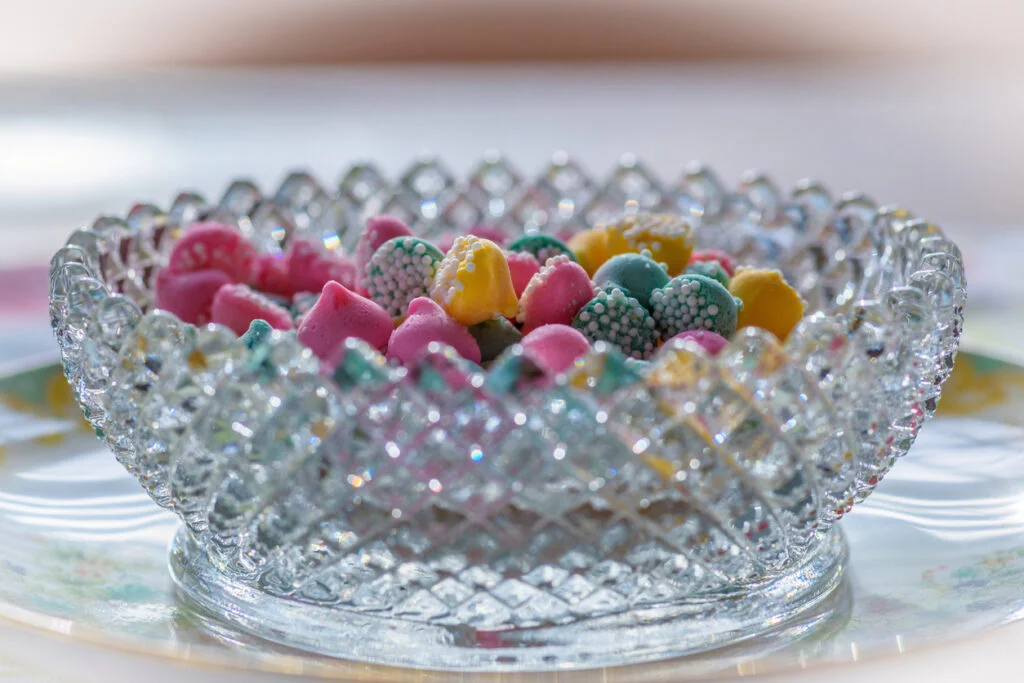
The cut-glass or crystal candy dish represented both hospitality and decoration, catching light from nearby windows while offering guests a modest sweet. These dishes typically contained hard candies in festive wrappers, butterscotch discs, or pastel after-dinner mints that seemed to regenerate mysteriously despite rarely being consumed. Children quickly learned which homes maintained the fiction of the untouchable candy display and which genuinely offered these treats for enjoyment. For anyone with these still sitting around, Lemon8 has some ideas for alternative purposes for this trinket.
The contents of these dishes operated under curious rules—refreshed before company arrived yet somehow maintaining the same selection for months between gatherings. These candy repositories often represented family heirlooms passed down from grandmothers or great-aunts, carrying symbolic weight beyond their practical function. As casual entertaining styles evolved and concerns about constantly available sweets increased, these once-ubiquitous dishes gradually migrated to china cabinets or were repurposed for more practical storage uses.
4. Decorative Ashtrays – Even in Non-Smoking Homes

Before health concerns relegated smoking to designated outdoor areas, ashtrays represented both practical necessity and decorative statements in most living rooms. These functional art pieces came in materials ranging from ceramic to brass to colored glass, often selected to complement the room’s color scheme rather than for utilitarian purposes. Many households displayed elaborate ashtrays despite no family members smoking—they simply belonged on coffee tables by unspoken cultural agreement.
The most distinctive featured abstract shapes, artistic swirls of color, or souvenir markings from vacation destinations, transforming a utilitarian object into a design statement. Visiting smokers understood the hierarchy—using the plain glass ashtrays for actual cigarettes while admiring but not utilizing the more decorative pieces. As smoking declined in social acceptability through subsequent decades, these once-essential accessories disappeared from coffee tables nationwide, with the most artistic examples preserved as vintage décor or repurposed as paperclip holders and trinket dishes.
5. Bowl of Decorative Matches – For Both Function and Display

Complementing the ubiquitous ashtrays, decorative matchbooks and match boxes formed colorful displays in ceramic or brass containers. These collections combined practicality with personal history, featuring logos from restaurants visited, hotels enjoyed, or special events attended. The matchbook collection functioned as a pre-digital travel log, casually documenting family experiences through these functional souvenirs.
Parents maintained these collections with surprising dedication, occasionally reorganizing them to showcase particularly memorable establishments or recent additions. Children understood these were not for everyday use—kitchen matches served that purpose—but rather for both decoration and conversation. As smoking declined and child safety concerns increased, these once-common coffee table residents gradually disappeared, though collectors still treasure vintage examples for their graphic design and historical significance.
6. Remote Controls – Wired to the Television

Long before universal remotes cluttered surfaces, the ’70s coffee table typically featured just one or two corded remote controls with limited functionality. These chunky devices—often connected to the television by a thick cable that snaked across the carpet—offered basic channel changing and volume adjustment without leaving your seat. The substantial weight of these early remotes made them natural coffee table residents between uses rather than items to be casually passed between family members.
Despite their limited capabilities, these devices represented cutting-edge convenience, freeing viewers from physically approaching the television for adjustments. Families developed unspoken hierarchies governing remote control access, with Dad typically claiming primary rights while others negotiated temporary privileges. As wireless technology evolved and remotes multiplied to control increasingly complex entertainment systems, these simple wired predecessors disappeared, though their spiritual descendants continue occupying coffee table territory in modern homes.
7. Coasters That Were Actually Used
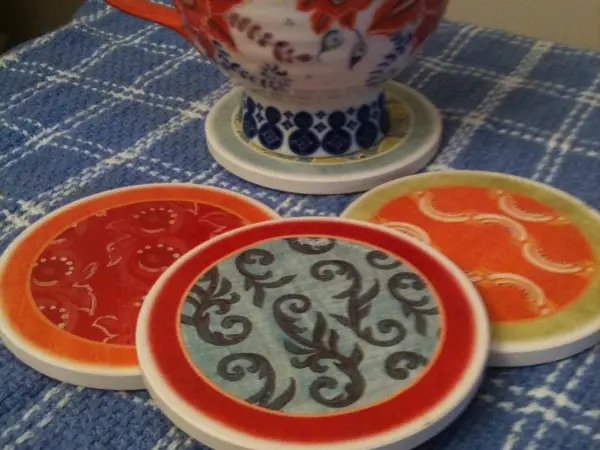
Unlike their often-ignored modern counterparts, ’70s coasters represented serious business in protecting wood surfaces from condensation rings. These drink protectors came in materials ranging from cork to ceramic to vinyl, often featuring conversation-starting images or phrases. Families maintained proper coaster discipline through gentle reminders and occasional stern glances when guests placed beverages directly on vulnerable table surfaces.
These practical accessories often arrived in matching sets, sometimes featuring zodiac signs, vacation destinations, or artistic reproductions that reflected the household’s interests. Using a coaster demonstrated respect for the home and its furnishings—a small but significant social signal about proper upbringing. As furniture styles evolved toward more water-resistant finishes and casual entertaining norms relaxed, consistent coaster use gradually declined, though the objects themselves remain common coffee table residents across generations.
8. The Bowl of Plastic Fruit – Eternally Fresh
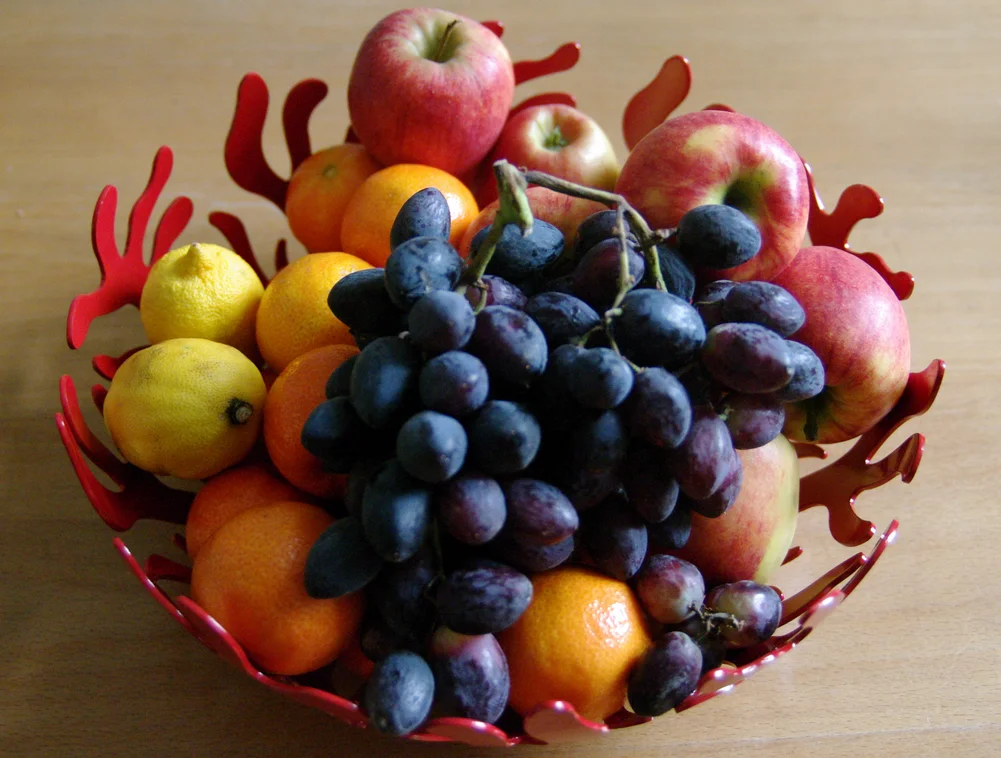
Perhaps no object better symbolized ’70s decorative philosophy than the arrangement of artificial fruit displayed in a wooden or ceramic bowl. These waxy approximations of apples, grapes, bananas, and oranges maintained perpetual freshness while adding a pop of color to living room decor. The plastic fruit phenomenon crossed geographic and socioeconomic boundaries, appearing in homes nationwide despite serving no practical purpose beyond visual interest.
The most realistic examples required occasional dusting but otherwise demanded nothing from their owners while maintaining consistent appearance year-round. Children learned early to distinguish these decorative items from actual fruit through cautionary tales about cousins or neighborhood kids who allegedly bit into the deceptive decor. As decorating trends shifted toward less literal interpretations of natural elements, these fruity displays gradually disappeared, occasionally resurfacing as ironic vintage accessories for nostalgic decorators.
9. Puzzles and Games – Half-Finished Family Projects
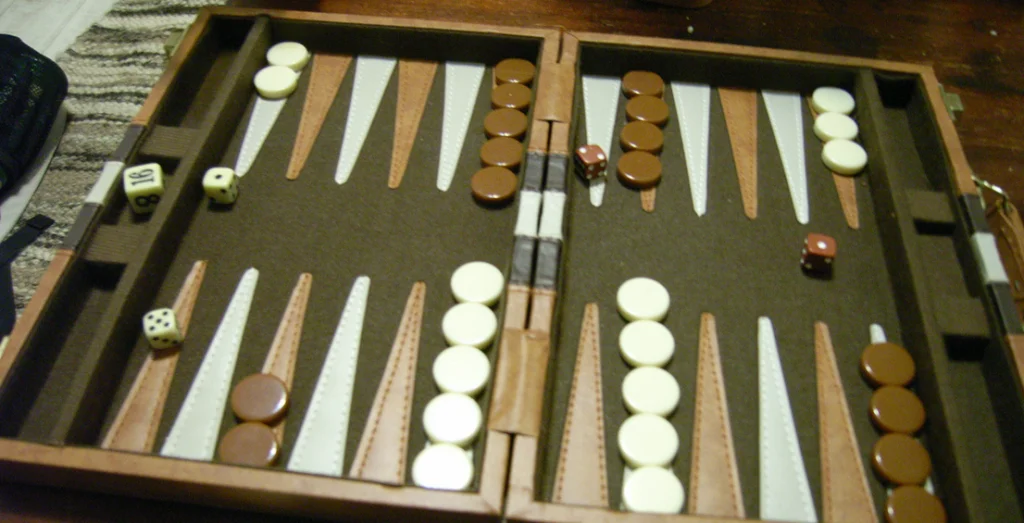
Many coffee tables hosted ongoing puzzle projects or family games in various states of completion. These shared activities—typically jigsaw puzzles with hundreds of pieces or strategic board games like chess or checkers—remained in place for days or weeks, protected from disruption by unspoken agreement. Family members would contribute a few puzzle pieces or make a chess move while passing through the living room, creating a communal entertainment experience that unfolded gradually.
These visible works-in-progress invited visitor participation and revealed something about the family’s interests and patience levels. Puzzles depicting scenic landscapes, famous paintings, or nostalgic Americana proved especially popular coffee table projects. As digital entertainment increasingly captured leisure time and dedicated game tables became more common in family rooms, these coffee table activities gradually migrated elsewhere, taking with them opportunities for casual intergenerational engagement.
10. The Ever-Present Bowl of Nuts with Dedicated Cracker

During holiday seasons and whenever company was expected, many coffee tables featured a wooden bowl of unshelled nuts accompanied by a metal nutcracker and small picks. This interactive snack option—typically featuring walnuts, pecans, almonds, and the occasional challenging Brazil nut—provided both refreshment and activity for visitors. The satisfying crack of successful shell removal punctuated conversations throughout gatherings, with small piles of shells accumulating as evidence of enjoyment.
The substantial wooden nutbowls, often hand-carved or lathe-turned, represented decorative elements in themselves, proudly displayed even when empty between entertaining occasions. This coffee table feature rewarded patience and technique, with certain family members developing reputations for their skill at extracting perfect nut halves from challenging shells. As pre-shelled nuts became more readily available and entertaining styles evolved toward less labor-intensive snack options, these traditional displays gradually disappeared from most homes.
11. Photo Albums – Ready for Sharing
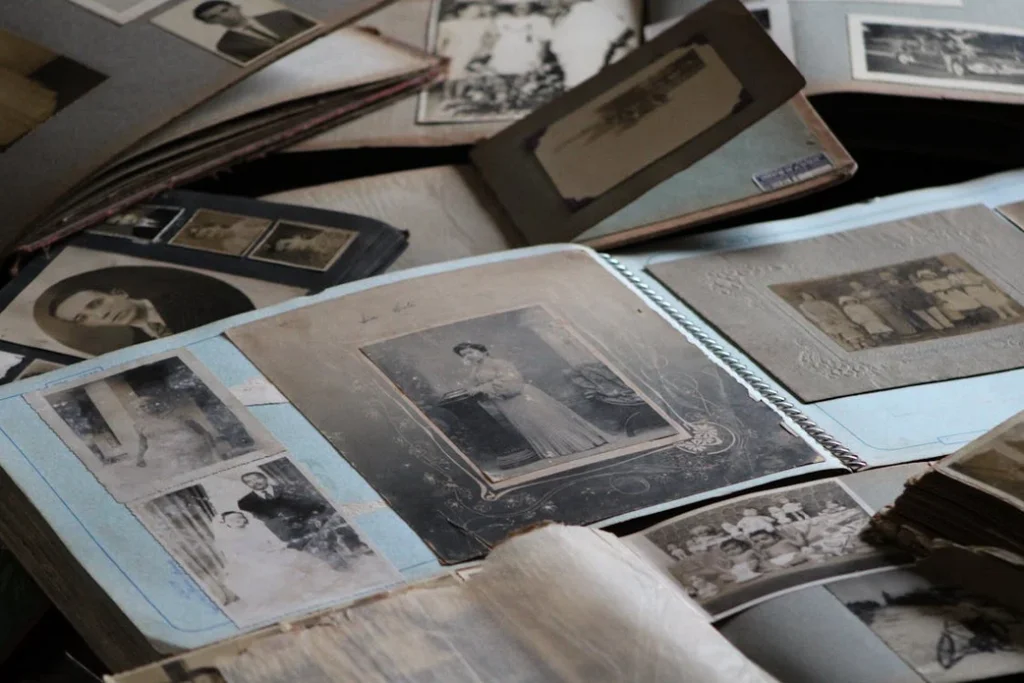
Before digital photo galleries lived in our pockets, physical photo albums occupied prime coffee table territory, ready for sharing with interested visitors. These leather-bound or vinyl-covered books contained carefully curated selections of family vacations, holiday gatherings, and school portraits, protected behind clear plastic sheets or held in place with adhesive corners. The physical presence of these albums invited browsing and storytelling in ways that today’s digital collections rarely manage.
The coffee table album represented a family’s edited highlights—not every photograph made the cut for this semi-public display. Parents regularly updated these collections, ensuring recent adventures and achievements received proper representation while occasionally retiring older images to storage albums kept elsewhere. As photography transitioned to digital formats and physical prints became increasingly rare, these once-common coffee table companions disappeared, along with the shared viewing experience they facilitated.
12. Scented Candles – Rarely Lit But Always Present

Decorative candles in various shapes and scents adorned many coffee tables, adding visual interest while promising ambiance that rarely materialized. These waxy sculptures—often in earth tones of rust, avocado, and harvest gold—coordinated with room decor while remaining perpetually pristine due to their primarily decorative purpose. Special occasions might warrant actually lighting these carefully selected accessories, but most remained in pristine condition throughout their coffee table residency.
The most elaborate featured multiple wicks, textured surfaces, or artistic shapes that discouraged actual use. Scented varieties promised pine forest freshness or cinnamon spice experiences, though their fragrance typically emerged only when guests leaned close for curious sniffing. As home decor trends shifted toward more minimal styling and battery-operated alternatives eliminated fire concerns, traditional candle displays gradually diminished, though their spiritual descendants still appear on many contemporary surfaces.
Our coffee tables have evolved dramatically since those wood-paneled days, with technology gradually replacing most of these familiar items. Today’s surfaces might host laptops, tablets, charging stations, and streaming service remotes—practical tools rather than decorative statements. Yet something was lost in this transition from display to function, from permanence to transience. Those ’70s coffee tables, with their carefully arranged contents, revealed something about who we were and what we valued in ways that our current surfaces, often cleared for the next activity, rarely manage to capture.


